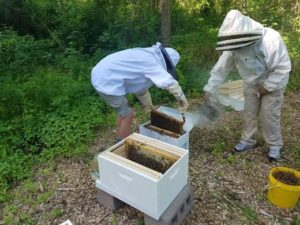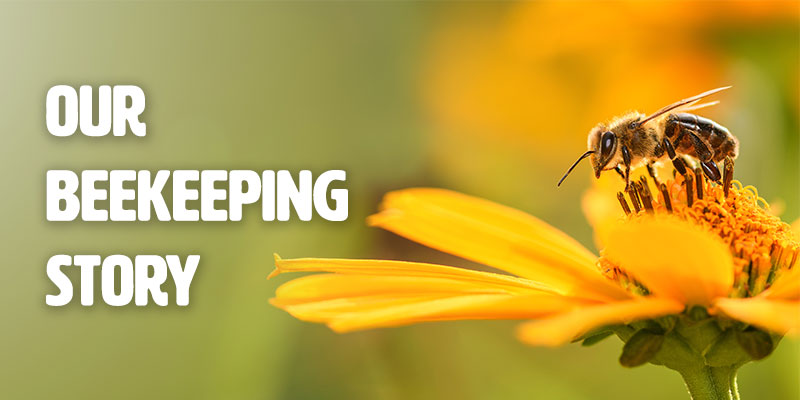Then and Now…
The Louisville Zoo began our beekeeping program with one hive in 2018. Since then, we have expanded to three hives scattered behind Gorilla Forest and the Wetlands. These areas are undeveloped and filled with plantlife the bees rely on for foraging, providing a refuge for both native Kentucky plants and animal species. The Zoo plans to add more hives to our collection, which in turn will create a healthier ecosystem. We also plan to increase the educational component of this project by involving camps and classes as in-person sessions return to the Zoo.
expanded to three hives scattered behind Gorilla Forest and the Wetlands. These areas are undeveloped and filled with plantlife the bees rely on for foraging, providing a refuge for both native Kentucky plants and animal species. The Zoo plans to add more hives to our collection, which in turn will create a healthier ecosystem. We also plan to increase the educational component of this project by involving camps and classes as in-person sessions return to the Zoo.
Why Keep Bees?
“Bees are an important part of the conservation conversation. We decided we needed to start telling that story. It is interesting that when talking about animal conservation, we easily think of critically endangered tigers or frogs in the rainforest. However, we quickly forget the local and more personal stories of wild animals struggling in our own community. Pollinators, such as honeybees, are a vital part of the world ecosystem. Without them, it is estimated that 1/3 of all plant life would die — including our food! Taking concrete actions to help honeybees and pollinators in our own neighborhood is a great way to live out our conservation mission. Plus, the honey is really yummy…. just ask the bears!” — Jamie Huber, Veterinary Hospital Manager and beekeeper at the Louisville Zoo.
What should I do if I see a bee at the Zoo?
BEE-lieve it or not our bees are actually friendly! Honeybees are gentle-natured and can only sting large animals once before dying. Honeybees would prefer to avoid you altogether, so if you see one buzzing around don’t swat or disturb her; just thank her for the work she is doing to pollinate our beautiful flowers and trees.

